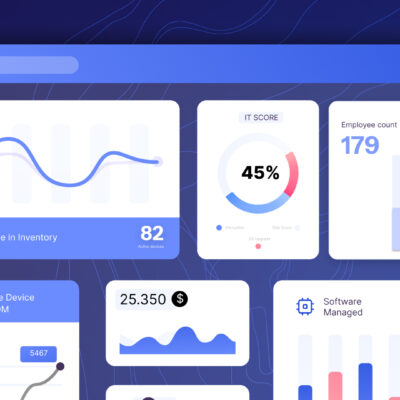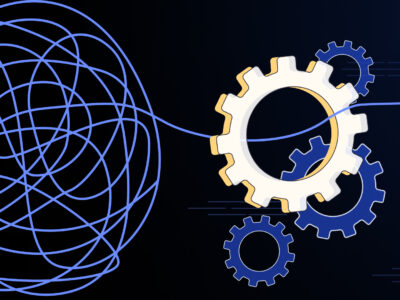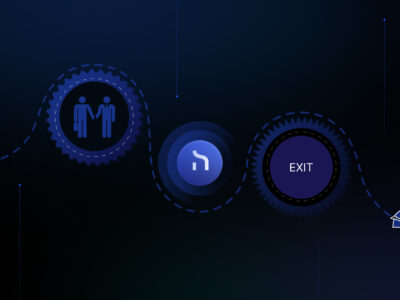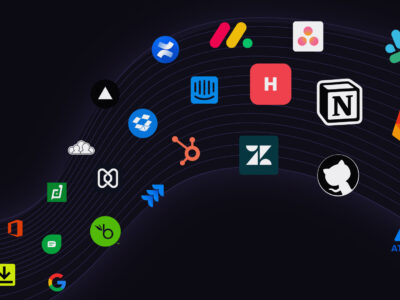SaaS License Management & Renewal Strategies for Cost Optimisation
The lion’s share of SaaS cost leakage happens due to underutilised SaaS and mismanaged licenses. From business owners, CIOs, and IT managers to CFOs, all these roles are interested in cutting down SaaS costs and eliminating potential risks from redundant tech. As businesses increasingly rely on SaaS applications, effective licence renewal and management strategies have become crucial for optimising costs.
In this blog, we will discover strategies for organisations to make informed decisions about their SaaS licenses and maximise the value of their investments.
What is SaaS Licence Management?
SaaS (Software as a Service) licence management refers to the processes and strategies to effectively oversee, control, and optimise the usage of their SaaS applications. In a SaaS model, users subscribe to software on a pay-as-you-go basis, typically on a monthly or annual subscription. Unlike traditional software licensing, where users purchase a perpetual licence, SaaS licences are recurring and can be adjusted based on changing organisational needs.
Effective SaaS Licence Management Strategies
Efficient licence management is critical to cost optimisation. Implement the following strategies to manage your SaaS licences effectively:
- Centralised Licence Tracking: A centralised system for tracking all SaaS licences within your organisation ensures visibility into the status of each licence, renewal dates, and associated costs. Centralisation also facilitates a holistic view for decision-makers.
- User Role-Based Licensing: Align licence allocation with user roles and responsibilities. Assign licences based on the specific needs of each user, avoiding over-licensing for underutilised features. This targeted approach helps optimise costs and allocate resources on a requirement basis.
- Regular Audits and Reviews: Conduct regular audits of your SaaS licences to identify redundancies, underutilised subscriptions, or inactive users. This proactive approach allows you to make adjustments as needed, preventing unnecessary expenses.
- Automation of Licence Management: Implement automation tools for licence provisioning and de-provisioning. Automated processes help ensure that licences are allocated and revoked promptly based on changes in employee roles or organisational needs, reducing the risk of over-licensing.
What Are the Benefits of an Effective Licence Renewal Process?
SaaS licence renewal is a critical phase in the lifecycle of subscription-based software. Strategic licence renewal processes offer several benefits for SaaS providers and their customers. Some key advantages are:
- Continuity of Service: Renewing software licences ensures that users have continuous access to the software, preventing disruptions to business operations. Timely renewals are crucial for maintaining productivity and avoiding downtime.
- Security and Compliance: Software licence renewals often include access to the latest security updates and patches, helping organisations stay protected against evolving threats. Renewing licences also ensures that organisations comply with licensing agreements and legal requirements, mitigating the risk of penalties or legal action.
- Cost Efficiency: Renewing licences is generally more cost-effective than purchasing new licences. It helps organisations avoid the potentially higher costs of acquiring new software or facing penalties for using expired licences.
- Access to New Features and Improvements: Renewing licences allows users to access new features, functionalities, and improvements introduced in the latest software versions.
Despite these benefits, organisations often face challenges in managing renewals efficiently, leading to unnecessary expenses. To navigate this process effectively, consider the following strategies:
Strategies for Effective SaaS Licence Renewal & Cost Optimisation
- Early Evaluation and Planning: Begin the renewal process well before the expiration date – allowing ample time for evaluation, negotiation, and potential changes to your licensing structure. Waiting until the last minute can limit your bargaining power and result in hasty decisions.
- Forecasting and Predictive Analytics: Utilise forecasting and predictive analytics to anticipate future licence needs on the basis of historical data. This forward-looking approach allows organisations to adjust their licensing structures proactively, avoiding under or over-provisioning. Leverage usage analytics tools to gain insights into how employees use SaaS applications. This data can inform decisions about licence allocation, helping you identify areas for optimisation.
- Assessment of Current Usage and Needs: Conduct a thorough assessment of your organisation’s current usage patterns and needs before entering renewal negotiations. Identify underutilised licences and adjust them to align with your current requirements before renewal negotiations.
- Continuous Vendor Evaluation: Regularly evaluate the performance of your SaaS vendors, even during non-renewal periods. This ongoing assessment ensures you always make informed decisions aligned with your business objectives. If a vendor is not meeting your expectations or if there are superior alternatives in the market, consider switching to optimise both performance and costs.
- Strategic Vendor Relationships: Build strategic relationships with your SaaS vendors. Establishing open lines of communication can lead to more favourable terms during renewal negotiations and provide insights into upcoming features or changes that may impact your organisation.
- Knowledge of SaaS Roadmap & Updates: Keep abreast of your SaaS vendors’ product roadmaps and updates. Vendors may introduce new features that render some third-party applications obsolete, giving you additional room for optimising your SaaS stack.
- Negotiation for Better Terms: Leverage the renewal process as an opportunity to negotiate for better terms. You might get discounted rates, additional features, or more flexible contract terms if you bargain based on data on your usage and the value derived from the SaaS applications.
- Market Research & Alternatives: Before automatically renewing with the same vendor, look for alternative solutions that offer similar or enhanced features at a more competitive price. This step ensures that you are making an informed decision about continuing with the existing vendor.
- Implementation of Cost Management Tools: SaaS cost management tools provide detailed insights into your overall cloud spending, including SaaS subscriptions. Implementing these tools allows you to identify areas of overspending and make informed decisions about resource allocation.
Incorporate these steps into your SaaS management checklist to cut costs and get the most out of your software stack. Stay agile, stay informed, and continually refine your licence management practices for long-term cost optimisation. If you are looking for a solution to manage your SaaS, ZenAdmin can be a game-changer. Get a free demo to learn how ZenAdmin can get more value from your software.












